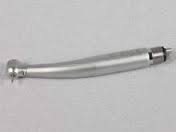Inlays and onlays
Inlays and Onlays are two dental procedures to restore the teeth, especially in a case of cavities and fractures; if the tooth is not too badly damaged and a crown is not necessary, a dental inlay might be better than a dental filling for some reasons.
A dental inlay is particularly used to restore the chewing surface of a back tooth or the space among the cups of a back tooth.
Inlay.
Usually, a dental inlay is called ‘indirect filling’, because it has the same functions of a traditional filling but it is not directly applied; if the decay or the fracture are too extensive, a direct filling might compromise the structural integrity of the tooth, so a dental inlay is preferred.
For this reason, a dental inlay is a halfway treatment between fillings and crowns.
A dental inlay generally requires two appointments to be applied; during the first visit, the dentist prepares the surface of the tooth to receive the inlay and takes a mould of the teeth. Then the mould is sent to a lab, where the inlay is created.
During the second appointment, the inlay is fitted on the tooth.
A dental inlay can be made up of porcelain or composite resin, but also gold is commonly used. Except that for gold, usually, an inlay matches the colour of the tooth, so that it is almost invisible.
This is not the only advantage of a dental inlay, both with respect to a traditional filling, both to respect a dental crown.
A traditional filling, usually made up of metal, can weaken the structure of the tooth, has a not aesthetic result, and can change its volume depending on the temperature; a dental crown can not properly follow the gum line.
A dental inlay makes the structure of the tooth stronger and less prone to cavities; the colour of the enamel remains quite the same; as not composed of metal, inlays will not change in shape or size if the teeth are subjected to changes in temperature.
When an inlay is applied on a tooth, more of the tooth is maintained than with a traditional filling.
Dental inlay.
Dental inlays last very long, about 30 years, and the only downside can be the price, that is much more expensive than a dental filling but lesser than a crown.
Nowadays, some dentists are also able to provide a dental inlay during a single appointment, thus reducing waiting times.





